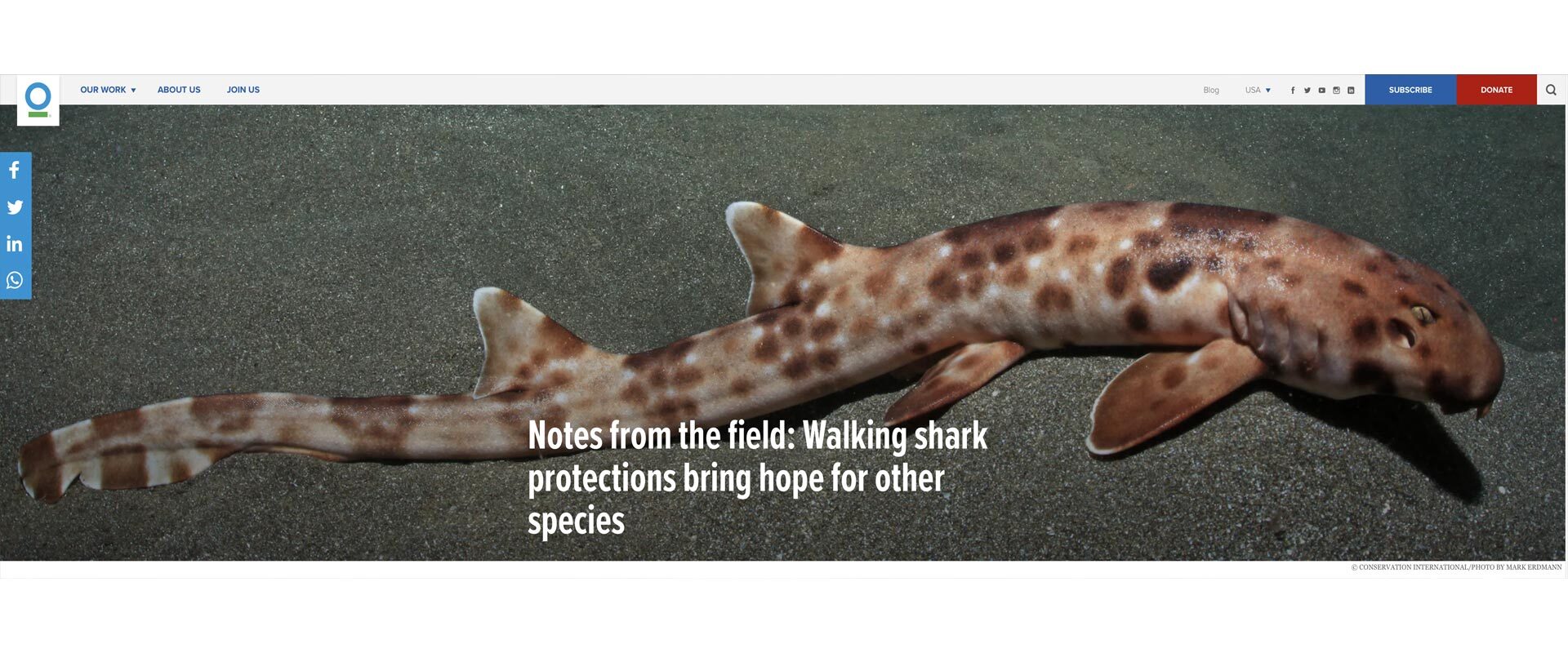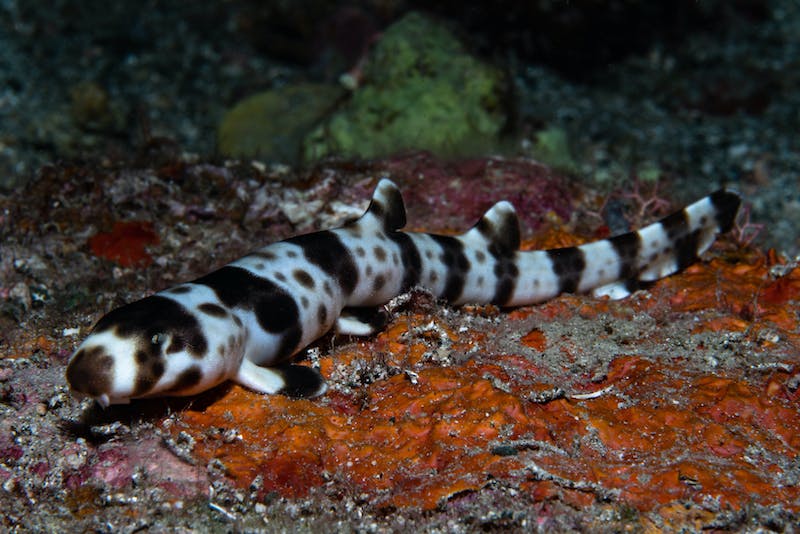Walking Shark Protections Bring Hope for other Species by Mary Kate McCoy
This article is posted with permission from Conservation International. It originally appeared in their Blog: Notes from the Field (April 19, 2023) by Mary Kate McCoy.
The Indonesian government has granted six species of threatened “walking sharks” the highest level of protection across all national waters — a move experts hope will lead to the conservation of other sharks, whose numbers have plummeted due largely to the shark fin trade.
“Walking sharks are small, charismatic and absolutely harmless to humans. Our hope is that they will be ambassadors for the conservation of their toothier cousins,” said Iqbal Herwata Putra, a scientist with Konservasi Indonesia, Conservation International’s main partner in the country.
“This is a big step that culminates years of effort,” he added. “We hope it will give walking sharks the chance to thrive in a changing climate.”
The Indonesian government and Konservasi Indonesia worked to show that the protections — which ban all fishing and collecting of walking sharks — support the survival of a species that’s important to Indonesia’s biodiversity and benefit local communities because of the ecotourism that walking sharks attract.
Walking sharks stand apart from other sharks for a couple of reasons. The first, of course, is their preferred mode of transport, which has captivated scientists and divers. They use muscular pectoral and pelvic fins to shimmy across the shallow ocean floor, poking their heads under coral and rocks in search of small fish, snails and crustaceans to eat. They can even slow their breathing and heart rate to wobble on land, across tidepools and reef flats, for up to an hour.
The second is their tendency to stay very close to home. Most walking sharks live out their lives within a mile of where they hatched. And they are only found in a relatively small area circling Northern Australia and New Guinea. Within that ring, individual species of walking shark, also known as epaulette sharks, occupy very specific habitats, with no two species of walking sharks overlapping in any given area. For example, the Cenderawasih epaulette shark (Hemiscyllium galei) is only found in Cenderawasih Bay, northwest of the Indonesian province of Papua — an extremely small area for a shark species distribution.
“For comparison, whale sharks and great white sharks are found in every ocean — and the common black tip reef shark is found across the entire Pacific and Indian Oceans, and into the Red Sea,” said Mark Erdmann, who leads Conservation International’s marine program in the Asia-Pacific and co-authored a report that outlined the threats facing walking sharks, and ultimately led to their protection. “To have a shark species that is found only in one relatively small bay is unheard of in shark biogeography.”
Species with more limited ranges are often more vulnerable to localized threats such as pollution, overfishing or natural disasters. The fact that walking sharks live in small, isolated groups puts even healthy populations at risk.
“If anything goes wrong — say a tsunami or volcanic eruption — an entire species could be knocked out in one go,” Erdmann said.
Moreover, climate change is making walking sharks even more vulnerable. Rising ocean temperatures are destroying the coral and seagrass habitats where walking sharks live and hunt for food. And unlike other species of sharks, walking sharks can’t simply migrate to another habitat because they are generally unable to swim across deep water or long distances.
“Walking sharks tend to spend their entire lives on the same reef,” said Iqbal. “When that gets degraded, they have nowhere else to go.”
Walking sharks are the youngest shark species on the planet, evolving as a separate genus only 9 million years ago — a mere blink in evolutionary terms compared to other sharks whose fossil records dates back 450 million years.
“There’s something symbolic about ensuring that we are protecting the most recently evolved sharks out there,” Erdmann said. “And as the climate changes, hopefully this is a group of sharks that has the ability to keep evolving to survive new threats.”






































